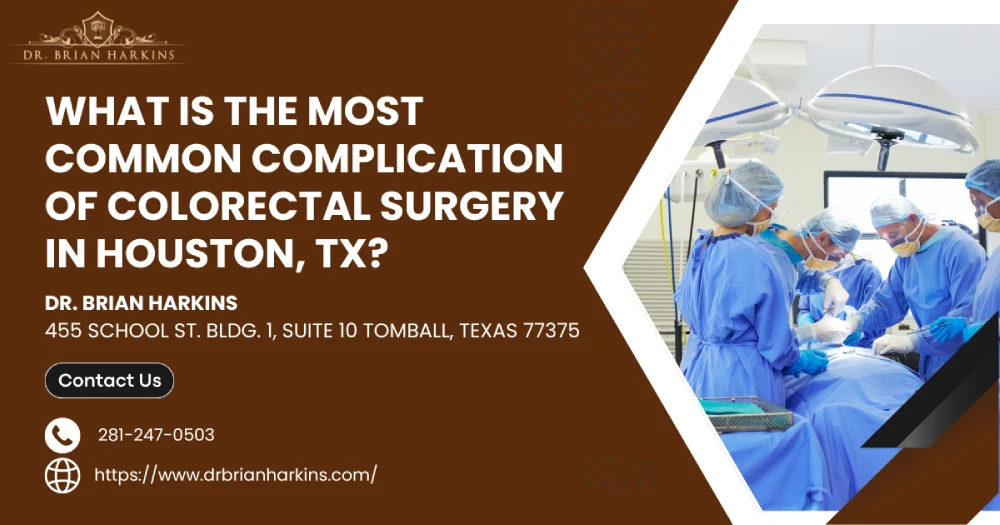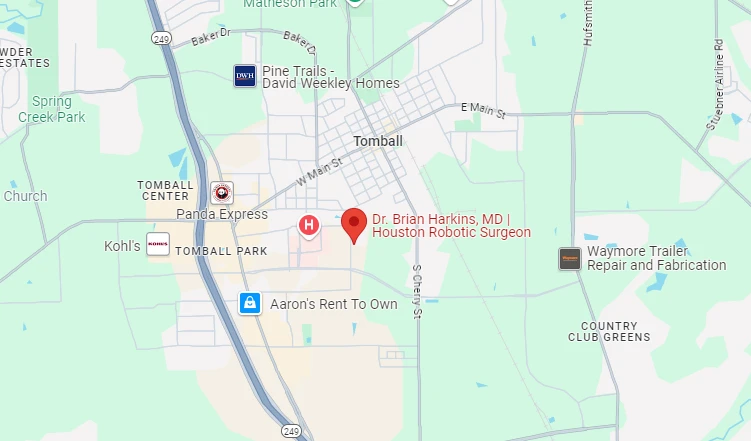
You’ve scheduled—or just finished—colorectal surgery and want to know what could go wrong, especially here in Houston where medical excellence is high and expectations match it. What is the most common complication of colorectal surgery in Houston, TX? It’s anastomotic dehiscence, a condition where the surgical connection between two bowel sections leaks, potentially leading to infection and other serious complications. The most common complication of colorectal surgery is anastomotic dehiscence, a breakdown of the surgical connection (anastomosis) where the colon or rectum has been rejoined after resection. Put simply, the new join can leak, allowing bowel contents to spill into the abdomen and cause infection. This article explains why leaks happen, who is most at risk, how Houston surgeons prevent and treat them, and what you can do to heal completely.
Anastomotic dehiscence—often called an anastomotic leak—occurs when the newly reconnected bowel fails to heal watertight after a colon resection or rectal resection. A microscopic gap can let bacteria and stool leak into the abdominal cavity, triggering infection, abscess, or sepsis. Below, you'll see exactly what happens, why it matters, and how Houston colon and rectal specialists think about this problem every single day.
A leak seldom stems from one single issue; usually, several elements converge. Understanding them helps you and your care team stack the odds in your favor.
| Category | Specific Factor | Relative Impact on Leak Risk* | Can You Influence It? |
|---|---|---|---|
| Patient | Smoking | High | Yes — quit ≥ 4 weeks pre-op |
| Patient | Diabetes / Poor Glycemic Control | Moderate–High | Yes — optimize A1C |
| Patient | Low Serum Albumin (<3 g/dL) | High | Yes — improve nutrition |
| Disease | Low Anterior Resection (≤5 cm from anus) | High | No |
| Surgical | Prolonged Operative Time (>4 h) | Moderate | Partly |
| Surgical | Intra-operative Blood Loss (>500 mL) | Moderate | Partly |
| Hospital | Absence of ERAS Protocol | Moderate | Yes (choose center) |
*“Relative Impact” combines findings from large studies in the Journal of Surgery, the National Institutes of Health database, and the American Society of Colon and Rectal Surgeons.
Houston’s diverse patient population means surgeons see a wide range of health profiles:
Leaks don’t always broadcast themselves loudly; sometimes the earliest hints are subtle changes in how you feel on post-op day three, five, or seven. Knowing what’s normal—and what isn’t—helps you act quickly and get lifesaving care.
Pick up the phone immediately if you notice chills, confusion, dizziness, drain output that looks like stool, or worsening redness around wounds. Most Houston specialists prefer a "better safe than sorry" approach—call their office or head to the emergency department rather than wait.
If your team suspects an anastomotic leak, time matters. Houston’s major medical centers follow streamlined algorithms that move you from bedside concern to definitive imaging within hours, limiting infection spread and improving short- and long-term outcomes.
Survival exceeds 90 % when leaks are caught and treated within 24 hours, according to recent data on patients undergoing colorectal surgery for cancer treatment and emergency surgery alike.
The best way to treat an anastomotic leak is never to have one. Houston colorectal surgeons marshal technology, protocols, and patient education to drive leak rates down, often below national averages published by the American Society of Colon and Rectal Surgeons and documented in the Journal of Surgery.
Recovery extends beyond the hospital walls. Your habits, diet, and support system all shape how quickly your intestines heal and how confident you feel resuming daily life in the Bayou City’s bustling environment.
Anastomotic dehiscence may be the most common complication after colon and rectal surgery, yet it’s far from inevitable. By understanding risk factors, watching for early warning signs, and partnering closely with Houston’s high-caliber colorectal teams, you dramatically reduce the risk of serious complications. Quit smoking, optimize nutrition, follow your ERAS plan, and stay alert to subtle changes during recovery. When questions arise, call your care team quickly—speed saves. With preparation and vigilance, most patients heal smoothly and return to Houston’s vibrant lifestyle sooner than they imagined. Take charge of your recovery, and let your surgical team guide you every step of the way.
The most frequent and serious complication is an anastomotic leak, where the surgical join in the bowel fails to heal properly. This can lead to infection, abscess, or even sepsis if not caught early. Houston hospitals take a proactive approach with rapid diagnostics, preventive surgical techniques, and early patient mobilization to reduce this risk.
Laparoscopic and robotic surgery reduce abdominal wall trauma, pain, and hospital stay. However, large studies show the anastomotic leak rate is similar to open surgery when the same surgical principles are followed. Technique, blood supply, and patient risk factors remain the biggest determinants of leak incidence.
Yes. Patients with inflammatory bowel disease—especially those on long-term steroids or biologics—face an increased risk of postoperative anastomotic leak. Surgeons often modify the medical regimen, optimize nutrition, and sometimes divert the stool stream with a temporary stoma to protect the anastomosis.
Although less common, a leak can happen after ileostomy reversal because a new anastomosis is created. Risk factors include poor blood flow, tension, and local infection. Surgeons frequently perform an air leak test intra-operatively and follow enhanced recovery pathways to catch problems early.
The American Society of Colon and Rectal Surgeons issues evidence-based guidelines on colorectal procedures, risk factors for postoperative complications, and enhanced recovery protocols. Adherence to these guidelines by Houston hospitals correlates with lower leak rates and better cancer treatment outcomes.
Light walking starts within 12–24 hours. Most patients progress to low-impact cardio at three weeks and core strengthening at six weeks, provided there are no serious complications. Always check with your surgeon to individualize your recovery after surgery and protect the healing abdominal wall.
Low rectal anastomoses may present with pelvic pain, urgency, or purulent drainage from a presacral abscess rather than diffuse abdominal pain. Because the leak can be deep in the pelvis, CT imaging is essential. Patients undergoing rectal cancer surgery should report any new pelvic pressure quickly.
Some randomized trials suggest specific probiotics may modulate gut flora and reduce infectious complications after digestive surgery. However, evidence is mixed, and the National Institutes of Health calls for more research. Discuss any supplements with your surgical team before starting them.
Left-sided and low anterior resections carry a higher leak incidence due to poorer blood supply and higher anastomotic tension. Right-sided colectomies generally have lower leak rates. Nevertheless, patient factors—nutrition, diabetes, steroid use—remain critical determinants across all colon and rectal cancer surgeries.
Prior pelvic radiation for rectal cancer or gynecologic malignancies compromises blood supply and tissue quality, increasing the risk of anastomotic leak and delayed wound healing. Surgeons may recommend a protective stoma, employ advanced vascular assessment, or perform staged reconstructive procedures to mitigate those risks.


Dr. Brian Harkins is a renowned surgeon specializing in advanced, minimally invasive, and robotic surgical techniques. With a dedication to innovation and personalized patient care, he has transformed countless lives by delivering exceptional outcomes.

I want a website like this, where do i start?